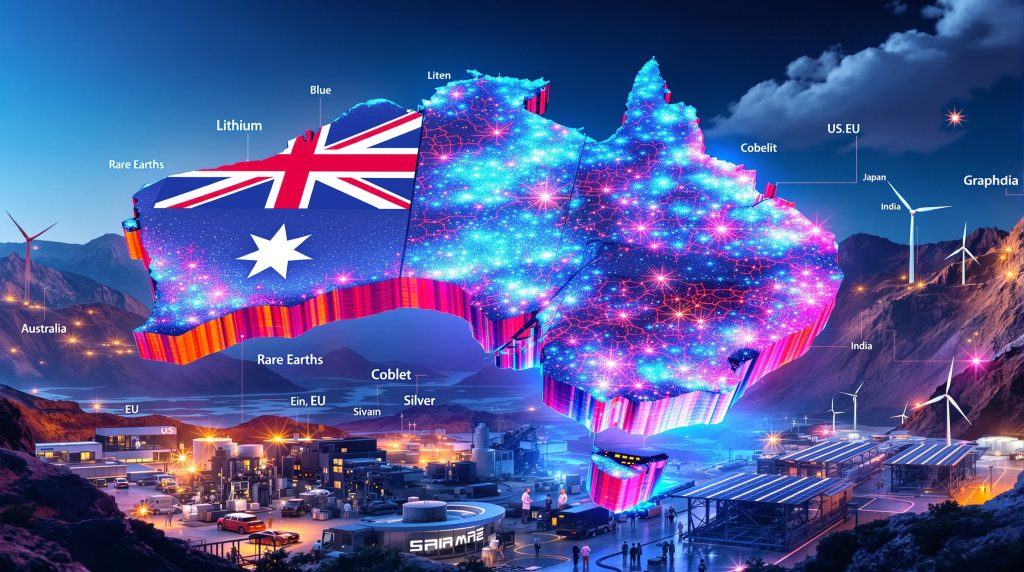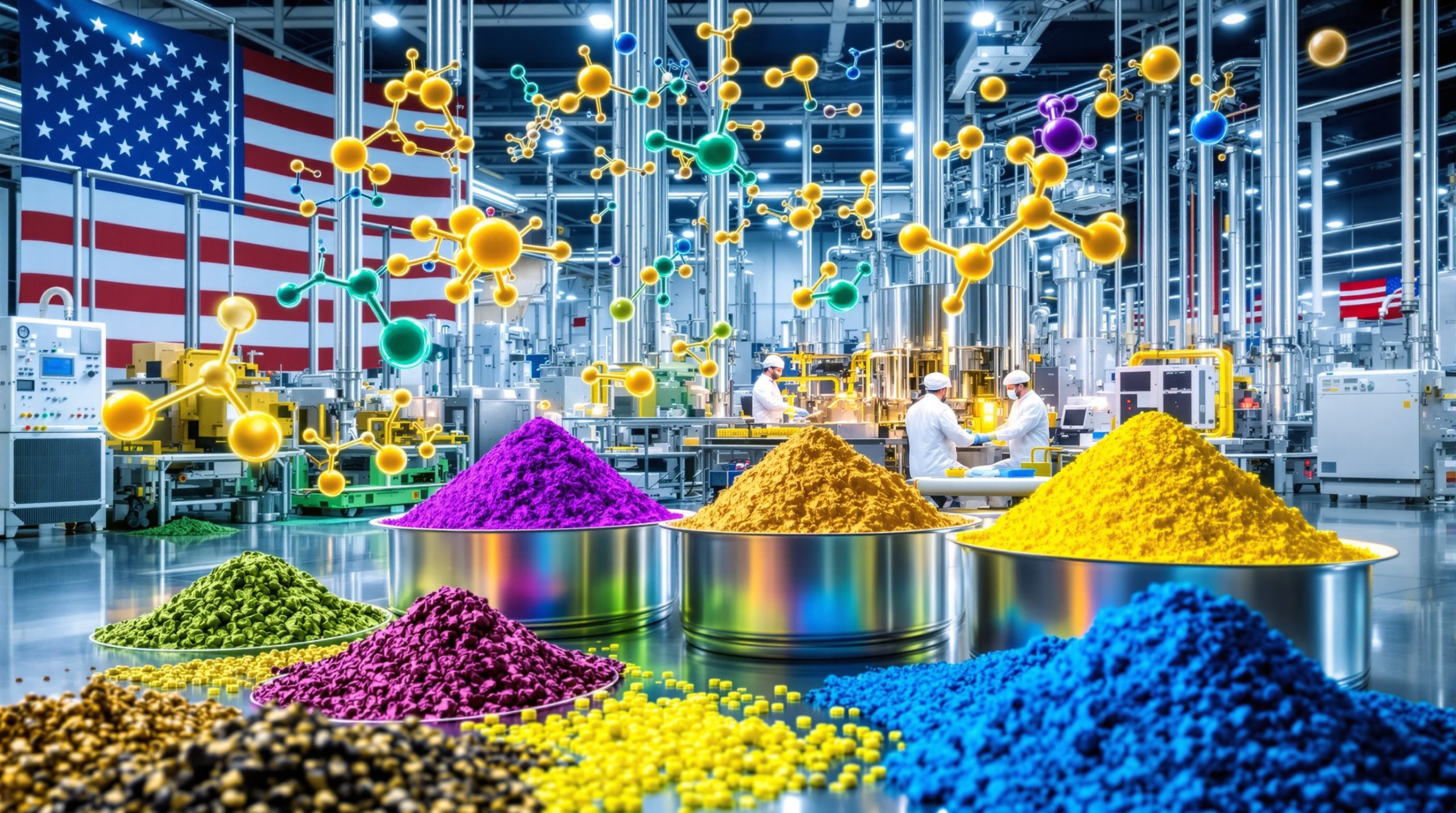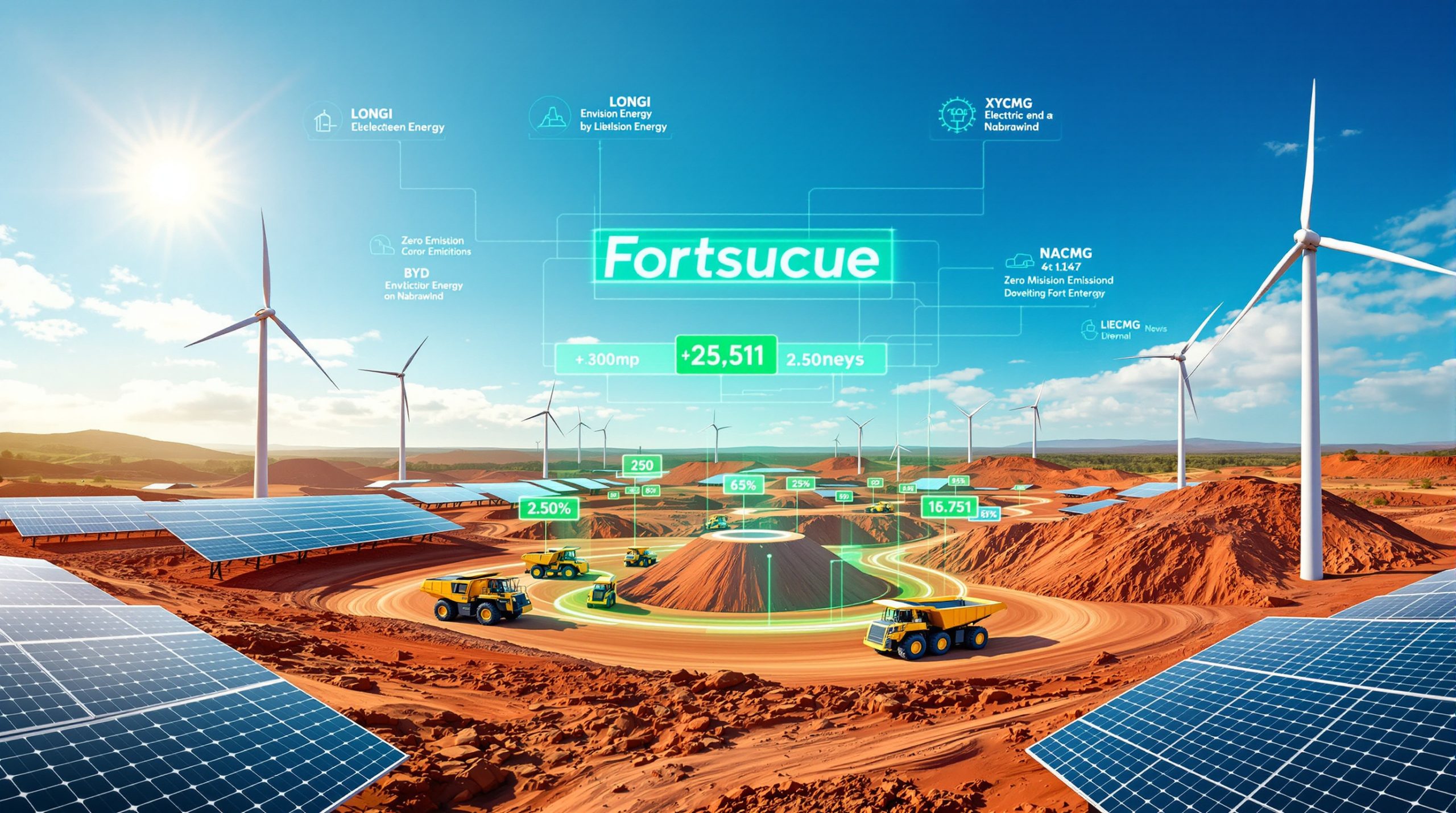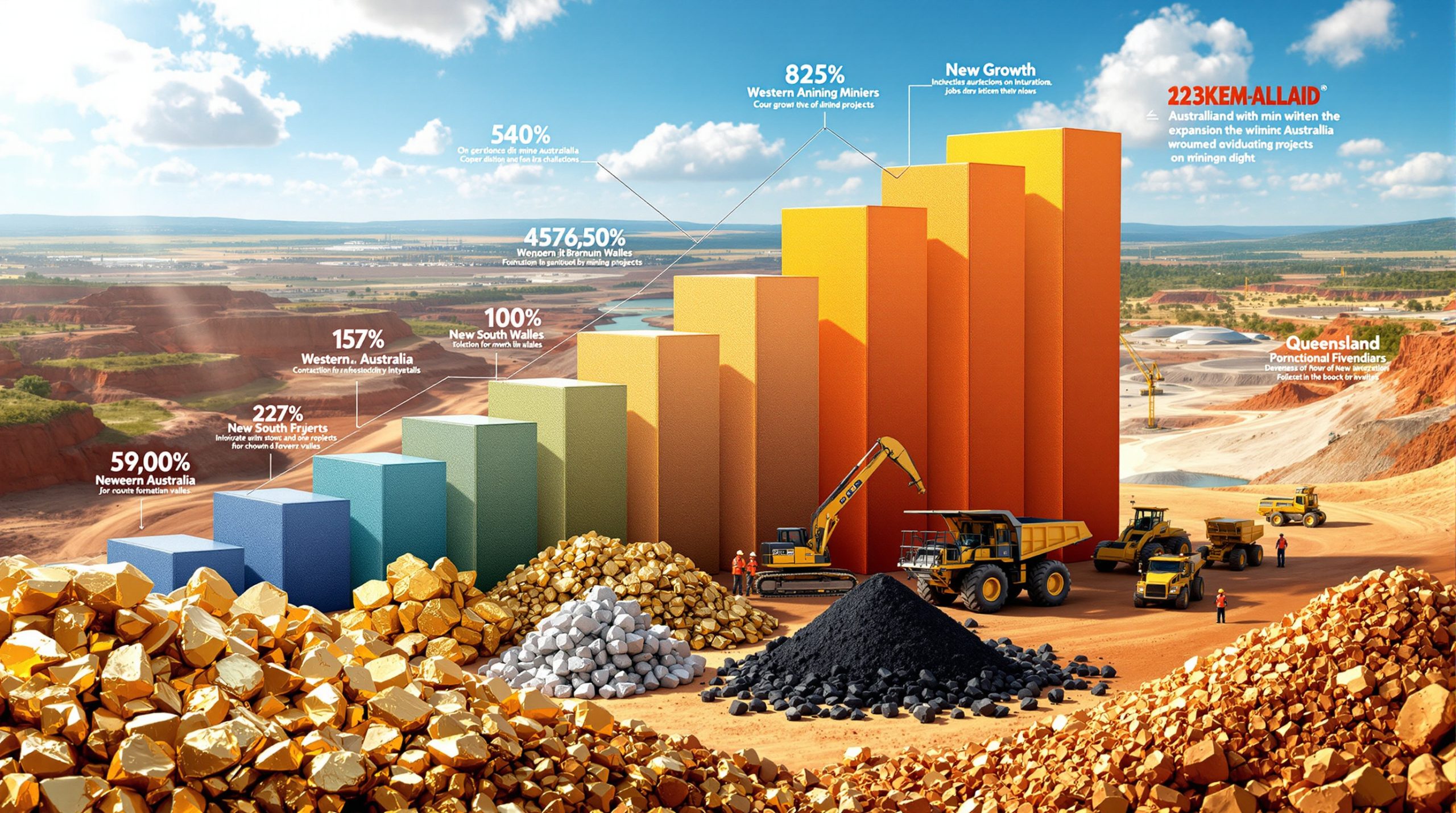Australia's Critical Minerals: Leveraging Natural Resources for Global Influence
What Makes Critical Minerals So Strategically Important?
Critical minerals represent more than just commodities—they are the foundation of modern technology, renewable energy systems, and defense capabilities. Their strategic importance has grown exponentially as nations worldwide pursue decarbonization goals and technological advancement. For Australia, these minerals represent a powerful geopolitical and economic lever that can influence international relations, trade negotiations, and strategic partnerships.
According to the International Energy Agency, demand for critical minerals energy transition could increase by up to 40 times by 2040 to support clean energy transitions. These resources have become essential components in everything from electric vehicle batteries to wind turbines and military hardware.
The U.S. Department of Defense identifies 35 critical minerals essential for defense applications, highlighting their importance beyond commercial use. Critical minerals include lithium, rare earth elements, cobalt, graphite, vanadium, and numerous others that appear in over 600 manufactured products according to the U.S. Geological Survey.
Their unique properties—including magnetic strength, electrical conductivity, and chemical stability—make them irreplaceable in current technologies. As countries race to secure reliable supply chains independent from dominant producers, Australia's abundant resources position it as a key global player.
How Does Australia's Mineral Wealth Compare Globally?
Australia possesses an extraordinary geological endowment that positions it as a critical minerals powerhouse on the world stage. The country's mineral profile includes:
- World-leading reserves of lithium (approximately 52% of global resources according to USGS)
- 17% of global cobalt resources
- 22% of global nickel resources
- Significant deposits of rare earth elements
- Major reserves of copper and manganese
- Emerging resources in gallium, germanium, and other technology-critical elements
This mineral wealth extends beyond mere quantity—Australia's deposits are generally high-grade, accessible, and located in politically stable jurisdictions with established mining infrastructure. This combination creates a compelling value proposition for international partners seeking secure supply chains.
The country currently produces 14 of the 31 minerals classified as "critical" by major economies, with potential to expand this portfolio through further exploration and development.
Australia's geological advantage spans multiple provinces including the Pilbara, Yilgarn Craton, and Eastern Goldfields regions, offering diverse mineral deposits with varying characteristics and applications.
What Role Do Critical Minerals Play in Australia's Economy?
Export Value and Growth Trajectory
The minerals sector remains the backbone of Australia's export economy, contributing nearly 60% of total export value in recent years according to Australian Mining. While traditional resources like iron ore and coal continue to dominate, critical minerals represent the fastest-growing segment of Australia's mineral exports.
| Critical Mineral | Export Growth (Recent Years) | Projected Value Potential (AUD) |
|---|---|---|
| Lithium | 40-50% | 15+ billion |
| Nickel | 25-30% | 9+ billion |
| Rare Earths | 35-45% | 6+ billion |
| Cobalt | 30-35% | 4-5 billion |
Note: Specific growth percentages and projected values vary by source and timeframe. These figures represent general industry trends rather than precise forecasts.
This growth trajectory reflects the accelerating global transition to clean energy technologies and the increasing strategic premium placed on secure supply chains for these materials.
Employment and Regional Development
The critical minerals sector has become a significant employer, particularly in regional Australia. Mining directly employs over 250,000 people across the country, with critical minerals operations creating thousands of additional jobs across the exploration, mining, processing, and manufacturing spectrum.
The multiplier effect of these operations extends to supporting industries, infrastructure development, and community services. Companies like Pilbara Minerals have transformed into significant lithium producers from Western Australia's spodumene deposits, while Lynas Rare Earths operates the Mount Weld mine and processing facilities.
How Is Australia Using Critical Minerals in International Relations?
Strategic Partnerships and Trade Agreements
Australia has leveraged its critical minerals endowment to strengthen bilateral relationships with key partners:
-
United States: The Australia-US Climate, Critical Minerals and Clean Energy Transformation Compact signed in 2022 has facilitated investment in Australian projects, technical cooperation, and preferential access to US markets. The Critical Minerals Facility provides up to $2 billion in financing.
-
European Union: Economic partnership frameworks with provisions specifically addressing critical minerals supply and processing.
-
Japan: The Japan-Australia Strategic Partnership Agreement includes collaborative research initiatives and investment frameworks focused on rare earths and battery minerals.
-
India: Emerging cooperation on mineral processing technologies and supply chain integration.
These partnerships extend beyond simple buyer-seller relationships to encompass technology transfer, research collaboration, and strategic alignment on resource security issues.
Countering Supply Chain Vulnerabilities
Australia has positioned itself as a reliable alternative to concentrated supply chains, particularly those dominated by China. By offering politically stable and environmentally responsible sourcing options, Australia provides partner nations with supply chain diversification that reduces geopolitical risk.
This position has been strengthened through:
- Development of domestic processing capabilities to move beyond raw material exports
- Strategic stockpiling initiatives for key minerals
- Streamlined regulatory frameworks for critical minerals projects
- Enhanced traceability and ESG credentials for Australian mineral products
What Policy Frameworks Support Australia's Critical Minerals Strategy?
National Critical Minerals Strategy
The Australian Government has implemented a comprehensive national strategy that aims to transform the country into a "renewable energy superpower" through critical minerals development. The defence‐critical materials strategy outlines key policy elements including:
- Expedited permitting for critical minerals projects
- Financial support mechanisms including the Critical Minerals Facility providing up to $4 billion in financing
- Research and development incentives for processing technologies
- Export finance guarantees for qualifying projects
- Foreign investment facilitation for strategic partnerships
The Modern Manufacturing Strategy identifies critical minerals processing as a national priority, recognizing the value-add potential beyond raw extraction.
Domestic Processing Incentives
Recognizing that maximum leverage comes from value-added processing rather than raw material exports, Australia has implemented policies to encourage domestic processing capabilities:
- Production tax credits for domestic processing facilities
- Infrastructure support for processing hubs
- Preferential treatment for projects that include downstream processing
- Research partnerships with universities on metallurgical innovation
- Skills development programs focused on mineral processing expertise
Foreign Investment Review Board guidelines include specific provisions for critical minerals assets, ensuring these strategic resources remain aligned with national interests.
How Is Australia Countering China's Dominance in Critical Minerals?
The China Challenge
China currently dominates global processing capacity for many critical minerals, particularly rare earth elements (approximately 85% of global processing according to USGS) and controls about 60% of global lithium processing capacity according to Benchmark Mineral Intelligence.
This concentration creates vulnerability for nations dependent on these materials for economic and defense applications.
Australia's strategic response includes:
- Developing sovereign processing capabilities across the critical minerals value chain
- Forming partnerships with like-minded nations to create alternative supply networks
- Implementing foreign investment screening to prevent strategic asset acquisition
- Supporting research into alternative materials and recycling technologies
- Engaging in international forums to promote market transparency and fair trade practices
Case Study: Rare Earth Elements
Australia's approach to rare earth elements illustrates its broader critical minerals strategy. Despite China controlling approximately 85% of global processing capacity, Australia has:
- Supported the development of Lynas Rare Earths as the only significant non-Chinese producer
- Established processing facilities for rare earth concentrates
- Formed strategic offtake agreements with Japanese and American partners
- Invested in separation technology to produce individual rare earth oxides
- Created a regulatory framework that ensures environmental and social responsibility
What Challenges Does Australia Face in Leveraging Its Critical Mineral Advantage?
Processing Capacity Limitations
Despite its mineral wealth, Australia faces significant challenges in developing domestic processing capacity:
- High energy costs compared to international competitors
- Limited existing technical expertise in certain processing methodologies
- Capital intensity of processing facilities
- International competition for investment dollars
- Legacy of exporting raw materials rather than processed products
Environmental and Social Considerations
Sustainable development of critical minerals resources requires addressing:
- Water usage in arid regions
- Energy requirements and carbon footprint
- Indigenous land rights and cultural heritage
- Community acceptance and social license
- Rehabilitation and closure planning
Market Volatility and Investment Risk
Critical minerals markets are characterized by:
- Price volatility that challenges investment decisions
- Long development timeframes versus rapidly evolving technologies
- Uncertainty about future demand profiles
- Potential for substitution or technological disruption
- International market distortions from subsidies and trade policies
How Are Australian Companies Positioning in the Critical Minerals Value Chain?
Major Players and Strategic Approaches
Australia's critical minerals landscape features a diverse mix of established miners and emerging specialists:
- BHP and Rio Tinto: Leveraging existing operations to expand into critical minerals
- Mineral Resources: Rapidly scaling lithium production and processing capabilities
- Lynas Rare Earths: Maintaining position as the leading non-Chinese rare earths producer
- Numerous junior explorers: Developing specialized deposits across the critical minerals spectrum
These companies are pursuing various strategies to maximize value:
- Vertical integration from mine to refined product
- Strategic partnerships with end-users and technology companies
- Investment in proprietary processing technologies
- ESG leadership to access premium markets and financing
What Future Developments Could Enhance Australia's Bargaining Position?
Technological Innovations
Several technological developments could strengthen Australia's position:
- Advanced separation techniques for rare earth elements
- Direct lithium extraction technologies
- Low-carbon processing methods
- Recycling and urban mining capabilities
- Battery precursor manufacturing
These technologies could significantly reduce processing costs, environmental impacts, and time-to-market for critical minerals products.
Policy Evolution
Future policy directions likely to enhance Australia's leverage include:
- Coordinated critical minerals diplomacy across like-minded nations
- Integration of critical minerals into broader trade and security frameworks
- Development of pricing mechanisms that reflect strategic value
- Enhanced traceability and certification systems
- Targeted investment in processing technology demonstration projects
How Can Critical Minerals Support Australia's Clean Energy Transition?
Domestic Value Chain Development
Australia's own clean energy transition creates opportunities to develop domestic demand for its critical minerals:
- Battery manufacturing for grid storage applications
- Electric vehicle component production
- Renewable energy equipment manufacturing
- Defense technology applications
- Research and development facilities
This domestic demand can provide baseline market security while enhancing value capture from resources.
FAQ: Australia's Critical Minerals as a Bargaining Chip
What are the most valuable critical minerals in Australia's portfolio?
Australia's most strategically valuable critical minerals include lithium, rare earth elements, cobalt, nickel, and graphite. These materials are essential for clean energy technologies and have limited alternative sources globally.
How does Australia's critical minerals strategy differ from other resource-rich nations?
Australia has placed greater emphasis on developing processing capabilities and forming strategic partnerships rather than simply maximizing export volumes. This approach focuses on long-term value creation and geopolitical influence rather than short-term revenue.
Can Australia completely replace China in critical minerals supply chains?
While Australia cannot match China's processing scale in the short term, it offers a complementary supply source that reduces concentration risk. Australia's advantage lies in providing ethically sourced, traceable materials from a politically stable jurisdiction.
How might critical minerals influence Australia's relationship with the United States?
Critical minerals have become a cornerstone of the Australia-US alliance, with minerals security increasingly viewed as national security. This shared interest creates opportunities for deeper economic integration and technology cooperation.
What timeline is realistic for Australia to develop significant processing capacity?
Developing world-class processing capabilities requires 5-10 years of sustained investment and policy support. The most immediate opportunities exist in lithium processing, while rare earths and other specialized minerals may require longer development timelines.
Conclusion: Australia's Strategic Mineral Opportunity
Australia's critical minerals reserve represents more than just an economic opportunity—it provides significant geopolitical leverage in an era defined by technological competition and clean energy transition. By strategically developing these resources and associated processing capabilities, Australia can enhance its international influence while contributing to global sustainability goals.
The country's success in leveraging this natural advantage will depend on coordinated policy approaches, private sector innovation, and strategic international partnerships. With thoughtful development, how critical minerals can be Australia's bargaining chip becomes clear as they secure favorable trade terms, strengthen alliances, and position the nation as an indispensable partner in global supply chains.
Developing domestic processing capabilities, such as the cobalt refinery project in Western Australia, further cements Australia's position as more than just a supplier of raw materials, according to ABC News.
Disclaimer: This article contains general information about geological resources and market projections. These should not be considered investment advice or definitive forecasts. Market conditions for critical minerals are volatile and subject to rapid technological and policy changes that may affect future outcomes.
Want to Discover the Next Major Mining Opportunity?
Stay ahead of the market with Discovery Alert's proprietary Discovery IQ model, providing instant notifications when significant mineral discoveries are announced on the ASX. Explore how historic discoveries have generated substantial returns by visiting our dedicated discoveries page and start your 30-day free trial today.




